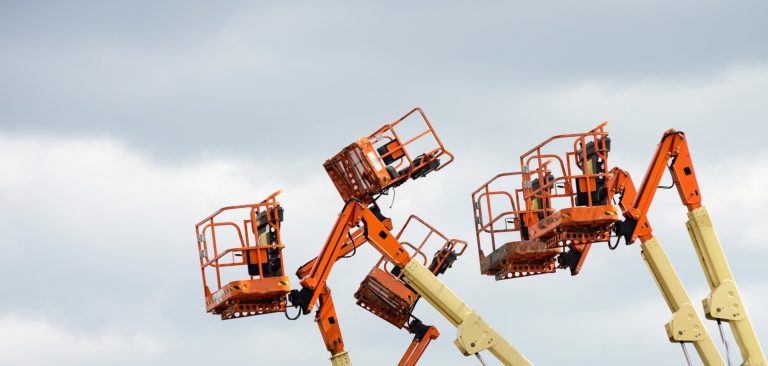Understanding the ANSI A92 Standards for Mobile Elevating Work Platforms
Understanding the ANSI A92 Standards for Mobile Elevating Work Platforms
- Familiarization and training. Through the new familiarization requirement, dealers and rental companies must offer familiarization and training to customers who request it. This encompasses understanding the rules, regulations and standards that apply to MEWPs; the potential hazards associated with their use; and the new MEWP safety features such as tilt sensors and load sensors.
- Load sensing. With the new standards, MEWPs will be manufactured with load cells built into the platforms that monitor the weight and prevent the machine from operating if overloaded. Sensors that sound a visual or audible alarm will go off when the platform exceeds the safe load limit. Booms will remain inside the proper load envelope and range of motion based on the weight in the platform.
- Wind force requirements. Under new wind force requirements, certain new MEWPs are rated for outdoor use and may require reduced platform capacities and/or be equipped with heavier counterweights to meet standards. Newer MEWPs of the same model may weigh more than their predecessors. Ensure jobsite surfaces and hauling equipment can handle the machine’s weight before using.
- Tilt-sensing and out-of-level requirements. This tilt sensor safety feature will automatically trigger an alarm and prevent movement of the chassis or work platform when a certain level of slope is exceeded. The degree to which equipment must be out of level varies by make and model of the machine.
- Entrance gates. When using a new MEWP, you may notice half-height, full-height or saloon-style gates, complete with toe guards, to get onto the platform. This is to ensure safety when using the machine. Chain entrances and flexible gates are not acceptable on newly manufactured MEWPs but are acceptable on older machines.
- Guardrail height changes. The updated standard requires a guardrail height of 43.5 inches compared to the previous 39.5 inches. Be aware of the raised railing height on select new models when renting your MEWP. Due to the change to the increased railing height, the older scissor lifts with shorter railing heights can fit through doors without folding the railing. With the new higher-railing-height units, you will have to fold the railings to pass through a normal doorway. To maneuver through these doorways with the raised height railings, ask your rental store how to fold the railings before working on your next project.
- Tires. The option of air-filled tires will be limited as most newly manufactured rough terrain equipment is now available with only solid body and/or foam-filled tires for added stability. Keep this in mind when planning for work that has soft ground or gravel. If air-filled tires are used, the lift must stay stable if a tire goes flat.
 Your local, ARA-affiliated rental store professionals can help you understand these new standards through information and training, as well as connect you with available rental products to meet your MEWP rental needs. To locate the rental store nearest you, use the Rental Store Quick Locator above.
Related articles:
What to Look for in a Rental Trencher
Selecting a Generator to Rent
Your local, ARA-affiliated rental store professionals can help you understand these new standards through information and training, as well as connect you with available rental products to meet your MEWP rental needs. To locate the rental store nearest you, use the Rental Store Quick Locator above.
Related articles:
What to Look for in a Rental Trencher
Selecting a Generator to Rent